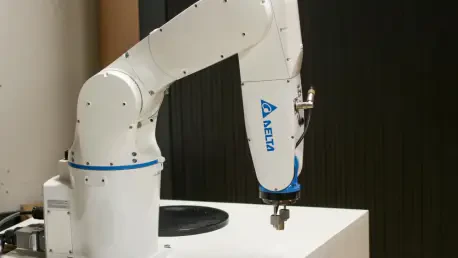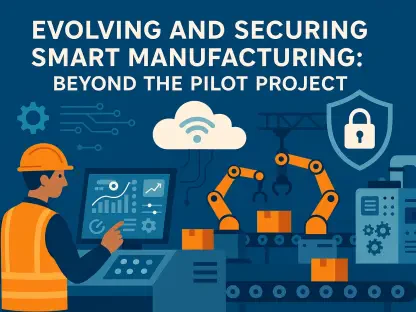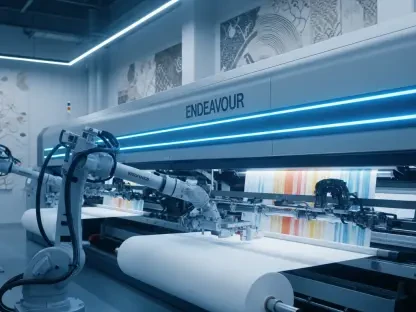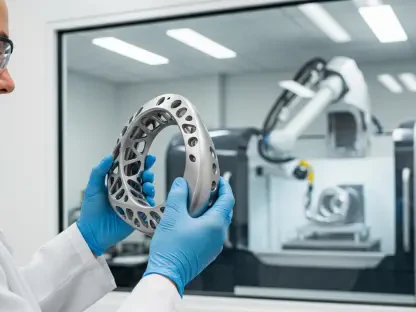I’m thrilled to sit down with Kwame Zaire, a renowned manufacturing expert with a keen interest in electronics and equipment. With his deep expertise in production management and thought leadership in predictive maintenance, quality, and safety, Kwame brings a unique perspective to the intersection of technology and industry. Today, we’ll dive into the evolving landscape of artificial intelligence, focusing on the remarkable rise of innovative companies, the implications of their staggering valuations, and the future of AI-driven advancements across various sectors.
How do you see the recent surge in AI company valuations reflecting broader trends in technology and investor confidence?
The recent surge in valuations for AI companies signals a profound shift in how investors perceive the potential of artificial intelligence to transform industries. It’s not just about the technology itself but the promise of scalability and disruption across sectors like manufacturing, healthcare, and even creative fields. Investors are betting big on AI’s ability to drive efficiency and innovation, though it’s worth noting that these high valuations also come with heightened expectations. If the technology doesn’t deliver tangible results soon, we might see a correction. But for now, the confidence is palpable, and it’s pushing companies to accelerate their R&D efforts.
What are your thoughts on the transition of AI organizations from nonprofit roots to for-profit entities with massive financial backing?
It’s a fascinating evolution. Many AI organizations started with a mission-driven focus, often as nonprofits, aiming to advance human knowledge or solve big societal problems. Transitioning to for-profit models often happens as the need for capital grows—AI research and infrastructure are incredibly expensive. This shift allows them to attract significant investment and scale quickly, but it also introduces new pressures to generate revenue and satisfy stakeholders. Balancing the original mission with commercial goals is tricky, but when done right, it can amplify their impact.
How do you think AI technologies can drive economic growth in ways we haven’t seen before?
AI has the potential to unlock economic growth by automating complex processes and enabling data-driven decision-making at an unprecedented scale. In manufacturing, for instance, AI can optimize supply chains, predict equipment failures before they happen, and reduce waste—all of which cut costs and boost productivity. Beyond that, AI can create entirely new markets, like personalized services or advanced analytics tools. It’s not just about replacing labor; it’s about augmenting human capabilities and creating value in ways that were previously unimaginable.
In terms of quality of life, what potential do you see in AI to enhance everyday experiences or spark creativity?
AI can significantly enhance quality of life by simplifying mundane tasks and giving people more time to focus on what matters. Think about smart assistants that manage schedules or AI tools that help diagnose health issues early. On the creativity front, AI is already being used to assist in design, music composition, and even storytelling. It lowers the barrier to entry for creative expression, allowing more people to experiment and innovate. The key is ensuring these tools are accessible and don’t just cater to a small elite.
There’s a lot of buzz around AI partnerships with major platforms for things like online shopping or content creation. How do you think these collaborations will reshape user experiences?
These partnerships are game-changers because they integrate AI directly into platforms people already use, making the technology seamless and intuitive. For online shopping, AI can personalize recommendations to a degree we’ve never seen, predicting not just what you might like but when you might need it. In content creation, AI tools can help users generate professional-grade material with minimal effort. This democratizes access to high-quality experiences, but it also raises questions about data privacy and the authenticity of AI-generated content.
With the rapid growth in AI, there are concerns about overinvestment or a potential bubble. How can companies in this space navigate these risks?
The fear of a bubble is real—when valuations skyrocket based on hype rather than revenue, there’s always a risk of a crash. Companies need to focus on sustainable growth by prioritizing real-world applications over speculative promises. That means investing in robust infrastructure, like reliable data centers, and building trust with users through transparency. They also need to diversify their revenue streams to weather any market downturns. It’s about playing the long game, not chasing short-term gains.
How do you think AI companies can compete with tech giants for talent in such a cutthroat market?
Competing for talent is one of the biggest challenges in AI right now. Tech giants have deep pockets and established perks, but smaller AI firms can differentiate by offering a sense of purpose and impact. Many top engineers are drawn to innovative projects where they can see their work directly shape the future. Flexible work environments, equity stakes, and a strong culture of collaboration also help. It’s about creating an environment where talent feels valued and empowered to push boundaries.
What role do you see partnerships with hardware and infrastructure providers playing in the future of AI development?
Partnerships with hardware and infrastructure providers are critical because AI isn’t just software—it’s heavily dependent on computing power and data storage. Collaborations with companies that build specialized chips or massive data centers enable AI firms to scale their models and process data faster. In manufacturing, for example, real-time AI analytics require robust hardware to handle the load. These partnerships reduce dependency on any single provider and foster innovation by combining expertise from different domains.
Looking at the regulatory landscape, how can AI companies balance innovation with the need to address scrutiny and compliance?
Regulation is a double-edged sword for AI companies. On one hand, it’s necessary to ensure ethical use and protect users; on the other, it can stifle innovation if it’s overly restrictive. The key is proactive engagement—working with regulators to shape policies that encourage responsible development. Transparency about data usage and AI decision-making processes is crucial. Companies also need to invest in internal governance to anticipate regulatory concerns, ensuring they’re ahead of the curve rather than reacting to criticism.
What is your forecast for the role of AI in shaping the future of industries like manufacturing over the next decade?
I believe AI will become the backbone of industries like manufacturing in the next decade. We’ll see smarter factories with fully integrated AI systems that predict maintenance needs, optimize production schedules, and even adapt to supply chain disruptions in real time. Beyond efficiency, AI will enable customization at scale, allowing manufacturers to meet individual customer demands without sacrificing cost-effectiveness. The challenge will be ensuring workers are upskilled to work alongside these technologies, but if done right, AI could redefine industrial productivity and innovation.









